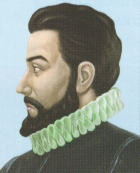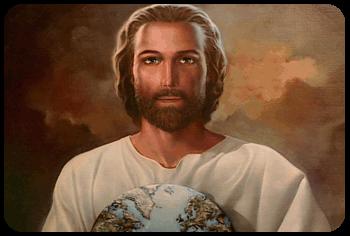
|
|
 |
|
**List: Spanish Ministry the Holy Bible ( la Santa Biblia )
|

Español / Spanish Bible History (2) 
**List: Spanish Ministry
the Holy Bible ( la Santa Biblia )
Spanish...
"THE SPANISH VERSIONS George Borrow’s narrative entitled "The Bible in Spain,"
which has become a classic of nineteenth century prose, has ac-
customed the English-speaking world, at least, to the colloca-
tion of those two words, Spain, and the Bible. Yet it was
precisely the lack of Bibles in Spain that accounts for that book,
and for the remarkable episode in Borrow’s life which it records."--1000 Tongues, 1939 [Info only:
G. Borrow?]"Unlike France and Italy, Spain’s Latin and Roman Catholic
sister-lands, there were no vernacular Bibles or Testaments pro-
duced in Spain by Catholic scholars with ecclesiastical approba-
tion, contemporary with versions called forth by the Reforma-
tion. It was not until 1793, when the French Revolution was
passing into the Terror, that the first [b]ible in Spanish was issued
on Spanish soil. It was a ten-volume affair, with a parallel
Latin Vulgate text, from which alone it was translated. The
Bishop of Segovia, its author, published a revision of it four years
later, and by this time it numbered nineteen volumes, without
the Vulgate text that was in the first issue. Obviously, the com-
mon people of Spain, even the literate fraction of them, were
unable to become Bible-readers as long as such bulky editions
prevailed."--1000 Tongues, 1939 [Info only:
incorrect Latin text.]"But from the middle of the sixteenth century the Word of
God in Castilian dress had seen the light in foreign lands. Men
of Spanish birth, studying abroad, or compelled to live abroad
because of their adherence to faiths denounced by the Inquisi-
tion, longed to see their own people enjoy the same feast as had
long since been spread before believers of other races. To this
end they labored and suffered to give Spain the Scriptures in the
vernacular. Other men risked, and some of them lost, their lives
in smuggling into Spain the forbidden Bibles thus published
abroad. One such character, defiant of the laws of man that he
might serve the Law of God, is mentioned in the HistoricalCatalogue of Printed Scriptures, a certain "Julian Hernandez
(named Julianillo), who in 1557 succeeded in conveying across the
Netherlands and landing safely at Seville two great barrels filled
with copies of J. Perez’ translations of the New Testament and
the Psalter. Ultimately he paid the penalty with his life."
(Vol. IV., p. 1429).
The Tyndale of the Spanish Bible was a young Spaniard who,
in the fashion of the time, translated his native name, de
Enzinas ("oak trees"), into Greek as "Dryander." He was
known as Dryander in England, where for a short time he held a
professorship in Greek at Cambridge. It was while he was still a
student at Wittemberg, living in the home of Melanchthon, his
teacher, that he made what was the first translation of the New
Testament into the Spanish tongue. The book was printed in
1543 at Antwerp, but had a strange fate. The Emperor, Charles
V, was then master of the Low Countries, as well as of most
of the rest of Western Europe, including of course his native
Spain. Desirous of having such distinguished patronage, En-
zinas dedicated the work to the Emperor, and removed from it
whatever he thought might offend. Unfortunately he failed to
alter certain sentences which he had had printed in capital letters
because of their importance to true Christian doctrine, as the
translator had learned from Wittemberg to construe it. Though
received by the Emperor at Brussels in a friendly way to receive
a copy of the new work, Enzinas was shortly after seized and
cast into prison, after the Emperor’s confessor had examined it
and denounced it as heretical. More fortunate than Tyndale,
Enzinas escaped to Antwerp, and spent the rest of his short life
of thirty-two years in Germany and England. As the Testament
was suppressed by imperial order, few copies of it have survived.Thus the Perez New Testament, published thirteen years later at
Geneva, and the de Reina Bible of 1569 (the first complete Spanish
Bible), serve as the basis of later revisions of the Spanish
Version.
Such is the very influential de Valera Version of 1602, which
is still largely used and by some preferred to all later texts.
England was the usual refuge for the eminent Spanish Reformers
who had to flee their own land. De Valera was educated at
Cambridge, taught at Oxford, and spent most of his life in Lon-
don, where his New Testament was printed in 1596, six years
before his entire Bible appeared at Amsterdam.
The violent persecutions that drove out of Spain great numbers
of her most learned and prosperous citizens, the Jews, are re-
sponsible for the appearance of Spanish Scriptures made by or
for these Jews in Italy and Holland. In fact, the earliest Old
Testament ever printed in the Spanish language (1553) is that
known as the "Ferrara Bible," from the fact that it was printed
by Jews there, under the patronage of the Duke of Ferrara. As
these "Sephardim" or Spanish-speaking Jews preferred generally(and still prefer today) to read their Scriptures in Rabbinic
letters, there is a whole series of Spanish publications to be listed
under the head of "Judaeo-Spanish." This version, in a dialect
somewhat differing from the Spanish spoken in Spain and the
colonies today, still meets the needs of the descendants of those
who fled from the Spain of Ferdinand and Isabella more than
four centuries ago.
The widespread diffusion of the Spanish language, chiefly
through the colonization and conquests of the sixteenth and
seventeenth centuries in both the East and the West Indies, has
brought about a language situation that baffles all attempts to
please the whole Spanish-speaking world of today by any one
version. There is [RVG 2010] Spanish Bible that holds the unique place
that the King James Bible holds in English. Various revisions and
additional translations have been made. The older versions in
revised form are still the most widely circulated. The "Hispano-
Americana" New Testament (1916), like the Brasileira Bible in
Portuguese, represents the effort to share with the Latin Ameri-
can world the [so-called] advances in knowledge of text and language ex-
pressed in the English Revised Versions."-- 1000 Tongues, 1939 [Info only:
radical ERV.]
[Christian Helps Ministry (USA)] [Christian Home Bible Course]